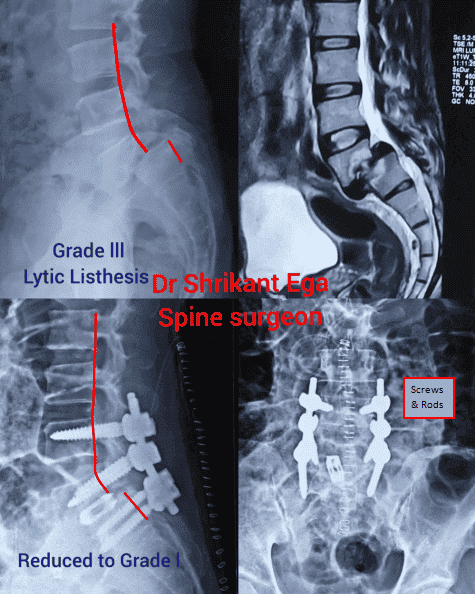Lumbar Instrumented Fusion (spine is fixed with screws and rods and two adjacent bones are fused)


This surgery has 2 parts
- Spinal instrumentation– it is a part of surgical procedure wherein titanium screws and rods are put into the spine. Instrumentation provides a permanent solution to spinal instability(a condition where in low back pain occurs because of abnormal movement in spine when patient bends, stands for long time or even when rolls on bed) and Facet arthritis (similar to arthritis of knee there is arthritis of spinal joints which hurts the patient on loading the spine)
There are many different types, shapes and sizes of spine implants designed specifically to treat spinal disorders in people of all ages.
- Spinal fusionis a process where bone graft obtained from patient is used to cause 2 opposing bony surfaces to grow and fuse together to form one single unit. This prevents any abnormal motion in between the bone segments and decreases the patient’s pain and suffering.
Following surgery patient is made walk the very next day. Patient can comfortably use stairs by third day of surgery and are discharged 4 days after surgery
Both procedures work together to stop abnormal movement at the involved spinal level(s). This does not necessarily mean the patient is unable to bend over. Many patients report that they actually feel more mobile because their pain has been reduced or eliminated as a result of spinal fusion surgery.
This procedure is done in longstanding backache because of Disc problems, Spinal instability, Canal stenosis and severe facet arthritis.
There are 3 ways this can be done most commonly
- Postero-lateral fusion
- Transforaminal interbody fusion
- Oblique lumbar interbody fusion
